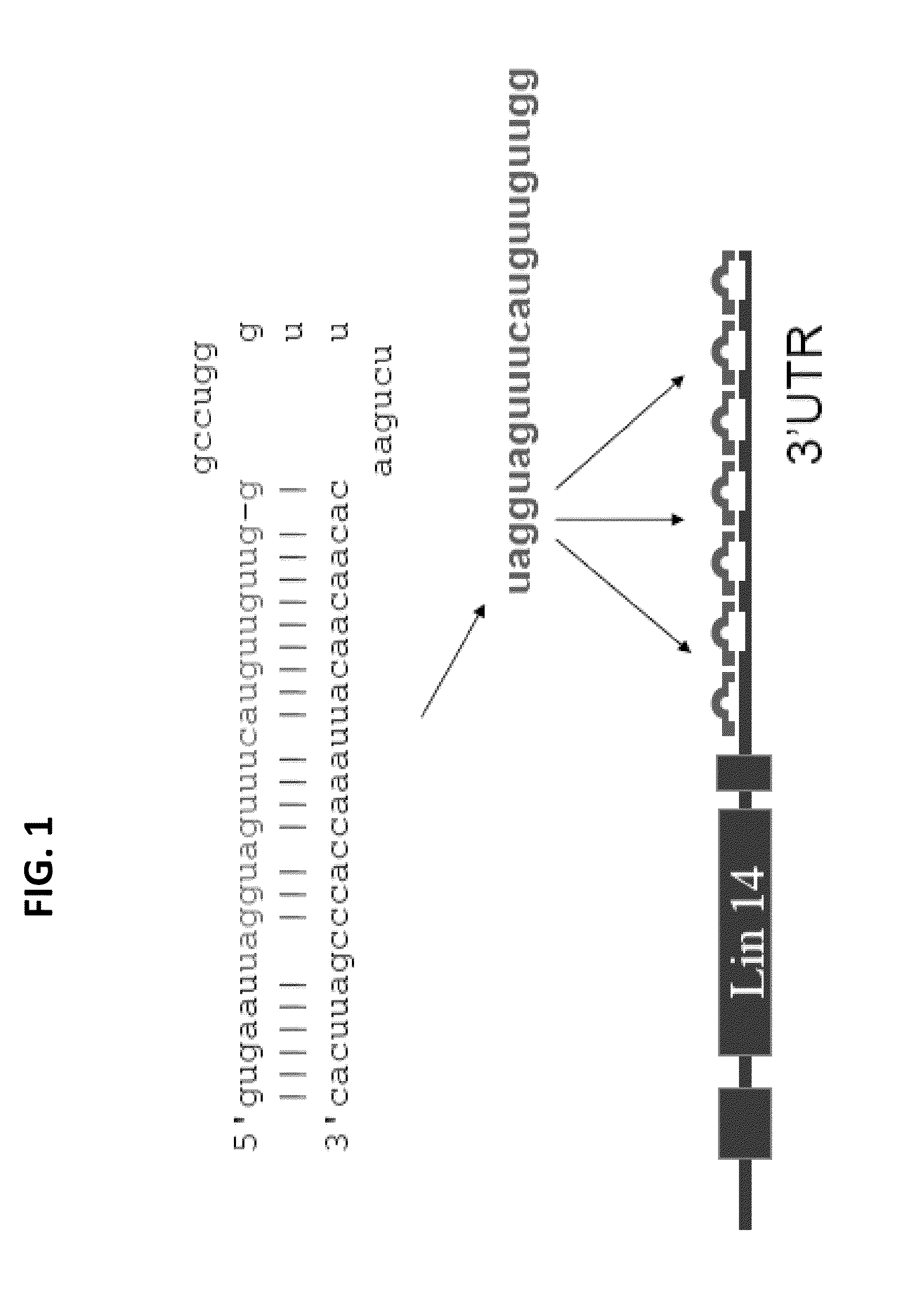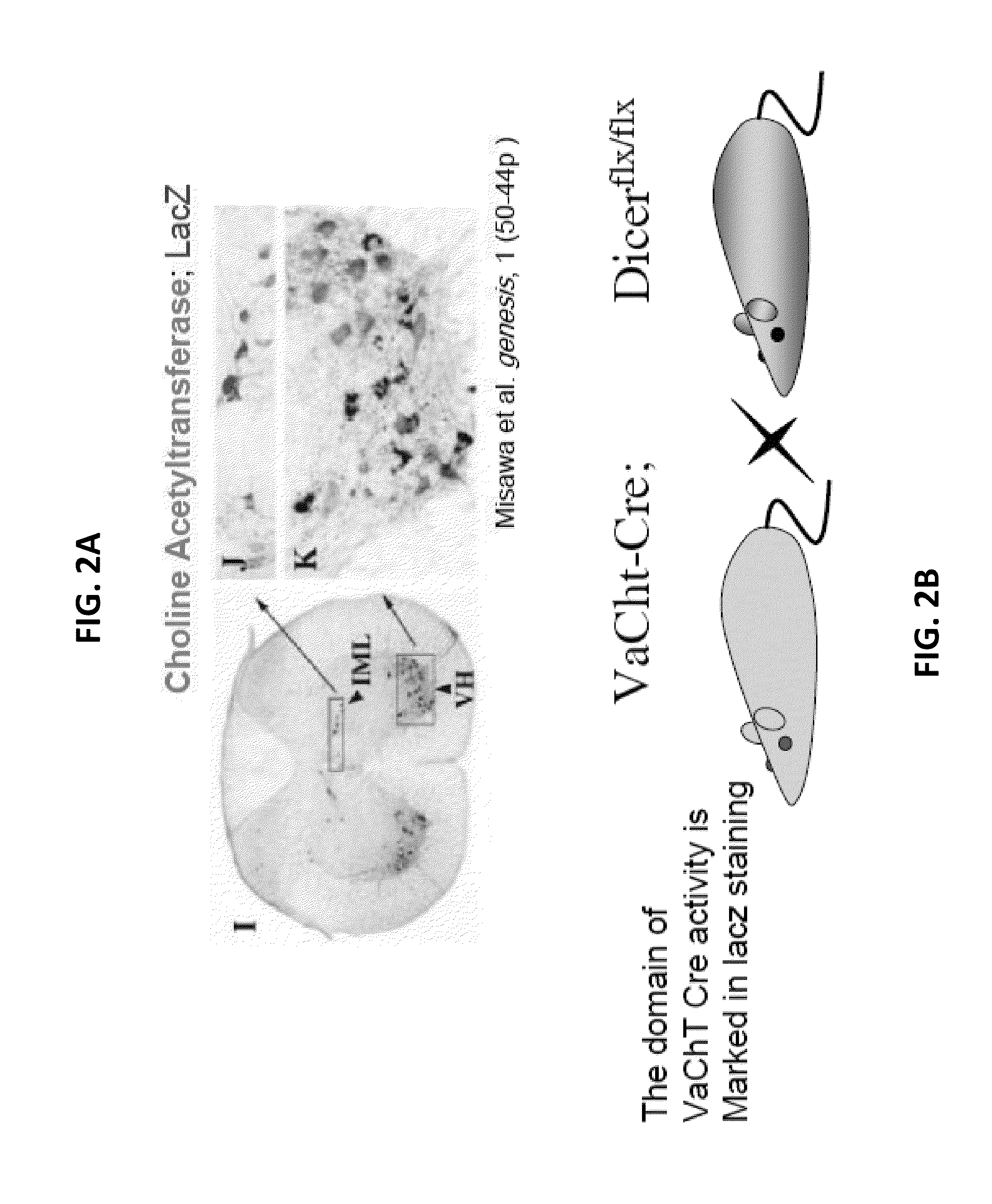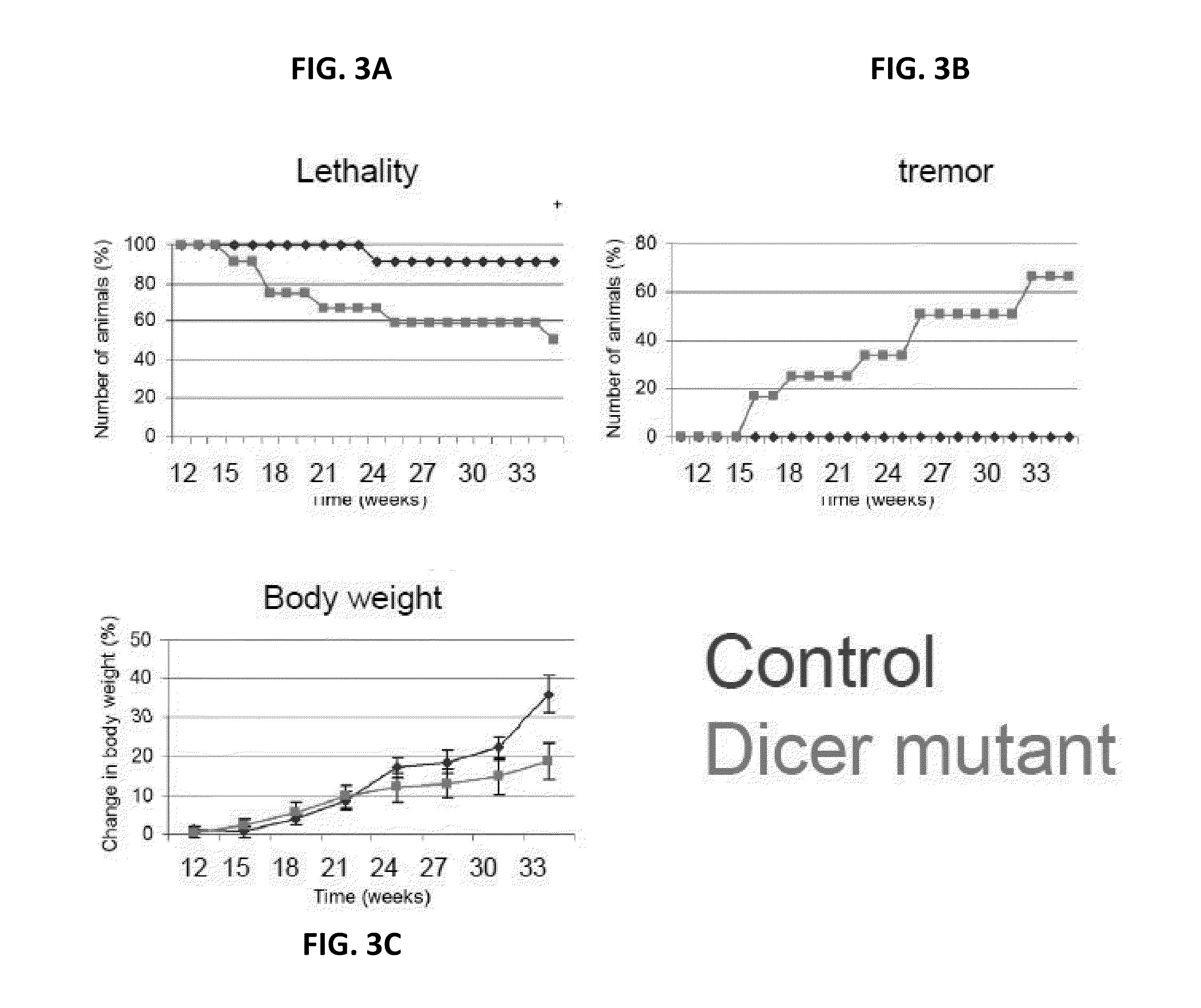DOWNREGULATION OF miR-218 MAY BE USED AS A BIOMARKER FOR HUMAN ALS
a technology of mir-218 and als, applied in the field of motor neuron diseases, can solve problems such as impaired gait, facial weakness and muscle cramps, and difficulty in swallowing, and achieve the effects of improving the quality of li
- Summary
- Abstract
- Description
- Claims
- Application Information
AI Technical Summary
Benefits of technology
Problems solved by technology
Method used
Image
Examples
example 1
Downregulation of microRNAs miR-9 and miR-218 May Be Used as Biomarkers for Human ALS
[0272]Abstract
[0273]Recent results by the present inventors suggest that microRNA (miRNA) genes contribute to the pathogenesis of motor neuron (MN) diseases such as amyotrophic lateral sclerosis (ALS). The present inventors studied the in vivo role of miRNA in motor neurons in a mouse model and found novel possible markers of ALS that may help clinical diagnosis.
[0274]First, using mice carrying a deletable Dicer gene and a MN-specific Cre technology, the miRNA pathway was inactivated specifically in post mitotic MNs. The resultant mice manifest functional, electrophysiological and histological hallmarks of denervation, sclerosis of the lateral tracks and muscular atrophy. This provided the first evidence for miRNA involvement in ALS pathogenesis.
[0275]Building on this finding, the present inventors sought to uncover the miRNA expression profile of MNs from hereditary forms of ALS. Importantly, the p...
example 1a
Loss of miRNA Activity in the MNDicermut Causes Progressive Kinetic Dysfunction
[0302]In order to evaluate the involvement of miRNA in motor neuron (MN) pathologies, the present inventors specifically ablated Dicerl in post-mitotic, postnatal MNs, crossing a Dicerl conditional allele to a Cre-recombinase transgene, driven by a cholinergic-specific promoter that is expressed in post-mitotic but not developing MNs (Vesicular Acetyl-Choline Transporter; VAChT-Cre). As Dicer activity is required for miRNA processing in vivo, VAChT-Cre;Dicerflx / flx animals (also referred to below as “MNDicermut”) lose the ability to make functional miRNAs in a subset of postmitotic somatic MNs and therefore provide a compelling model for miRNA-loss of function in MNs.
[0303]Whereas VAChT-Cre;Dicerflx / + heterozygous animals (“controls”) are apparently normal, MNDicermut mice display a significantly shorter life expectancy and progressively lose weight (FIGS. 15A-B). To better understand the pathology of the...
example 2
The MNDicermut Exhibits Denervation Muscular Atrophy
[0304]To directly characterize the muscle phenotype, an electromyographic (EMG) study was performed, which showed frequent fibrillation potentials. These data are consistent with an ongoing denervation process, which probably underlies the muscular atrophy (FIGS. 16A-B). MNDicermut also exhibit angular myofibers on muscle histology, a pathognomonic sign of denervation-related muscular atrophy (FIG. 16C) and tremor that may also be attributed to denervation (data not shown). Taken together, it may be concluded that MNDicermut animals suffer from denervation muscular atrophy, which suggest loss of MNs.
PUM
 Login to View More
Login to View More Abstract
Description
Claims
Application Information
 Login to View More
Login to View More - R&D
- Intellectual Property
- Life Sciences
- Materials
- Tech Scout
- Unparalleled Data Quality
- Higher Quality Content
- 60% Fewer Hallucinations
Browse by: Latest US Patents, China's latest patents, Technical Efficacy Thesaurus, Application Domain, Technology Topic, Popular Technical Reports.
© 2025 PatSnap. All rights reserved.Legal|Privacy policy|Modern Slavery Act Transparency Statement|Sitemap|About US| Contact US: help@patsnap.com



